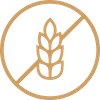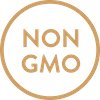Cacao has a history reaching back approximately 4000 years in South and North America where it has been cultivated by many different indigenous cultures. From the Olmecs to Mayans and Aztecs, cacao was revered within various traditions as a divine gift and even used as a form of currency. While the word "cacao" originates from the Mayan term "kakaw," the word "chocolate" is derived from the Nahuatl term "xocóatl". Though these terms resemble one another phonetically, xocóatl (meaning "bitter water") was an Aztec drink made from cacao nibs and spices which does not compare to modern-day chocolate. Rather, this bitter drink was offered by the Aztec emperor Montezuma to the Spanish conquistador Cortés, who in turn introduced cacao to the Spanish court. Spanish and Italian makers of the drink adapted the recipe by adding significant amounts of sugar, which gave rise to what is nowadays known as "chocolate."
Organic Cacao
Butter
Bundle
SKU
5399-bio-bundle
Organic cacao butter made from a premium blend of raw criollo and trinitario cacao beans. 100% cacao, directly sourced from a renowned cacao finca in San Martín, Peru. Gently processed and mechanically cold pressed hand-picked cacao beans from local experienced farmers. This purely plant-based and unrefined cacao butter is particularly rich in saturated and unsaturated plant fats with the full natural fatty acid profile of the cacao bean. Naturally contains caffeine. Gluten-, lactose- and soya-free. Vegan, no additives. 2x200g
- Premium cacao butter in a signature blend of the fine criollo and trinitario varieties
- Single origin: exclusively from a renowned fine cacao finca in San Martín, Peru
- Pioneers in sustainable, organic cacao cultivation in cooperation with smallholder farmers
- Over 25-year-old cacao orchard (Theobroma cacao L.) in a natural environment
- 100% cacao powder: unrefined, no additives
- Natural fatty acid profile of the cacao bean, rich in valuable unsaturated fatty acids
- Careful hand-harvesting and gentle cold pressing of ripe cacao fruits
- Cacao butter obtained mechanically from the cacao mass (paste) of ground cacao nibs
- No refinement or extraction
- Absolutely no pesticides
- 100% free from sweeteners, sugars and preservatives




























